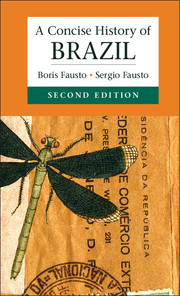Book contents
- Frontmatter
- Dedication
- Contents
- List of Maps
- Preface
- Map
- 1 Colonial Brazil (1500–1822)
- 2 Imperial Brazil (1822–1889)
- 3 The First Republic (1889–1930)
- 4 The Vargas State (1930–1945)
- 5 The Democratic Experiment (1945–1964)
- 6 The Military Government and the Transition to Democracy (1964–1984)
- 7 Modernization under Democracy (1985–2010)*
- Bibliography
- Index
6 - The Military Government and the Transition to Democracy (1964–1984)
Published online by Cambridge University Press: 05 August 2014
- Frontmatter
- Dedication
- Contents
- List of Maps
- Preface
- Map
- 1 Colonial Brazil (1500–1822)
- 2 Imperial Brazil (1822–1889)
- 3 The First Republic (1889–1930)
- 4 The Vargas State (1930–1945)
- 5 The Democratic Experiment (1945–1964)
- 6 The Military Government and the Transition to Democracy (1964–1984)
- 7 Modernization under Democracy (1985–2010)*
- Bibliography
- Index
Summary
Conservative Modernization
The movement of 31 March 1964 had been undertaken purportedly to free the country from corruption and Communism and to restore democracy. The new government began to change the country’s institutions by invoking what it called Atos Institucionais (Institutional Acts) or AIs. The acts were justified as a consequence “of exercising constituent power, which is inherent in all revolutions.”
The first AI was decreed on 9 April 1964 by the commanders of the army, navy, and air force. Formally, it preserved, with several modifications, the 1946 constitution. Congress would also continue to meet. The second proviso would be one of the military regime’s characteristics. Whereas the real power had been placed in another sphere, and the basic principles of democracy had been violated, the military government almost never showed itself to be unequivocally authoritarian. Except for short periods of time, Congress continued to meet, and measures that interfered with people’s rights were considered temporary. Even the first AI was set to expire on 31 January 1966.
- Type
- Chapter
- Information
- A Concise History of Brazil , pp. 273 - 323Publisher: Cambridge University PressPrint publication year: 2014
- 1
- Cited by

